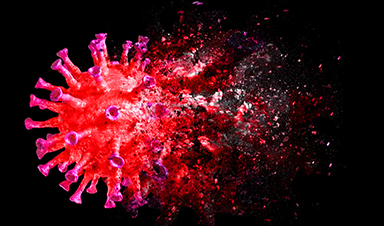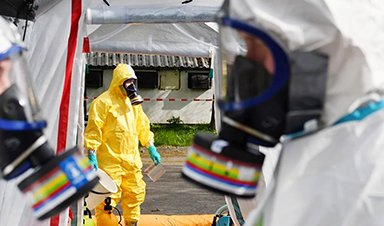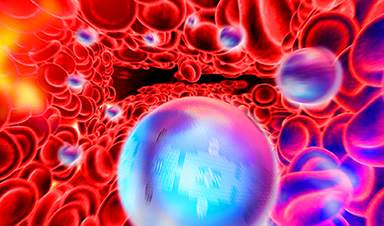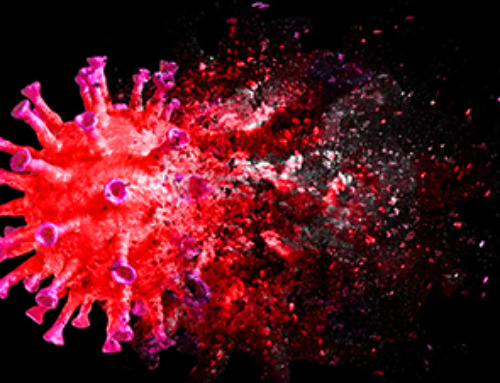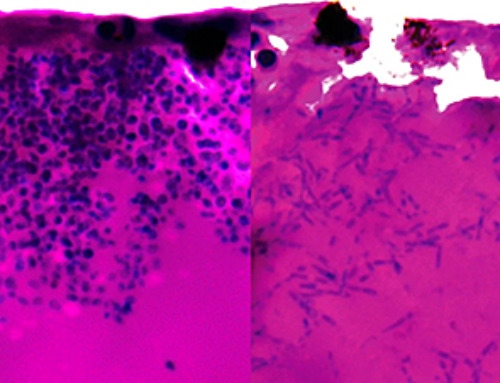How does our brain, which is capable of generating complex thoughts, actions and even self-reflection, grow out of essentially nothing? An experiment in tadpoles, in which an electronic implant was incorporated into a precursor of their brains at the earliest embryonic stage, may have edged us closer to answering this question.
Past attempts to peer into neurodevelopmental processes have relied on tools like functional magnetic resonance imaging or hard electrode wires stuck into the brain. But the imaging resolution was too low to be useful, while hard wires damaged the brain too much to offer anything other than a snapshot of a specific developmental moment.
Now, Jia Liu at Harvard University and his colleagues have identified a material – a type of perfluropolymer – whose softness and conformability matches that of brains. They used it to build a soft, stretchable mesh around ultrathin conductors that they then placed onto the neural plate – a flat, accessible structure that forms the neural tube, the precursor to the brain – of African clawed frog (Xenopus laevis) embryos.
As the neural plate folded and expanded, the ribbon-like mesh was subsumed into the growing brain, where it maintained its functionality while stretching and bending with the tissue. When the researchers wanted to measure brain signals, they wired the mesh up to a computer, which displayed the neural activity.
The implant appeared to neither damage the brain nor elicit an immune response, and the embryos developed into tadpoles as expected. At least one went on to grow into a normal frog, says Liu.
"Integrating all the materials and having everything work is pretty amazing," says Christopher Bettinger at Carnegie Mellon University in Pennsylvania. "This is a great tool that could potentially advance fundamental neuroscience by allowing biologists to measure neural activity during development."
The team has two main takeaways from the experiment. First, the patterns of neural activity changed as expected as the tissue differentiated into specialised structures responsible for different functions. It has not previously been possible to track how a piece of tissue self-programs into a computational machine, says Liu.
Is the human brain really the most complex object in the universe?
There are 86 billion neurons in your brain, roughly the same number as there are galaxies in the observable universe. Whether the mind is more complex than the cosmos, however, is up for debate.
A second mystery was how a regenerating animal's brain activity changes after amputation. A long-standing idea was that the electrical activity returns to an earlier developmental state, which the team confirmed by using its implant in an experiment involving axolotls.
Liu's team is now extending the research to include rodents. Unlike amphibians, their development takes place in a uterus, so implantation of the mesh will require in vitro fertilisation and a more complex way of measuring signal transmission than wiring the mesh up to a computer. However, Liu hopes that the insights that could eventually be gained from observing the earliest stages of conditions like autism and schizophrenia will be worth the effort.
Similar devices could potentially be used to monitor neuromuscular regeneration following injury repair and rehabilitation, says Bettinger. "Overall, this is an impressive tour de force that highlights the large potential breadth of applications for ultra-compliant electronics," he says.
News
AI Helped Scientists Stop a Virus With One Tiny Change
Using AI, researchers identified one tiny molecular interaction that viruses need to infect cells. Disrupting it stopped the virus before infection could begin. Washington State University scientists have uncovered a method to interfere with a key [...]
Deadly Hospital Fungus May Finally Have a Weakness
A deadly, drug-resistant hospital fungus may finally have a weakness—and scientists think they’ve found it. Researchers have identified a genetic process that could open the door to new treatments for a dangerous fungal infection [...]
Fever-Proof Bird Flu Variant Could Fuel the Next Pandemic
Bird flu viruses present a significant risk to humans because they can continue replicating at temperatures higher than a typical fever. Fever is one of the body’s main tools for slowing or stopping viral [...]
What could the future of nanoscience look like?
Society has a lot to thank for nanoscience. From improved health monitoring to reducing the size of electronics, scientists’ ability to delve deeper and better understand chemistry at the nanoscale has opened up numerous [...]
Scientists Melt Cancer’s Hidden “Power Hubs” and Stop Tumor Growth
Researchers discovered that in a rare kidney cancer, RNA builds droplet-like hubs that act as growth control centers inside tumor cells. By engineering a molecular switch to dissolve these hubs, they were able to halt cancer [...]
Platelet-inspired nanoparticles could improve treatment of inflammatory diseases
Scientists have developed platelet-inspired nanoparticles that deliver anti-inflammatory drugs directly to brain-computer interface implants, doubling their effectiveness. Scientists have found a way to improve the performance of brain-computer interface (BCI) electrodes by delivering anti-inflammatory drugs directly [...]
After 150 years, a new chapter in cancer therapy is finally beginning
For decades, researchers have been looking for ways to destroy cancer cells in a targeted manner without further weakening the body. But for many patients whose immune system is severely impaired by chemotherapy or radiation, [...]
Older chemical libraries show promise for fighting resistant strains of COVID-19 virus
SARS‑CoV‑2, the virus that causes COVID-19, continues to mutate, with some newer strains becoming less responsive to current antiviral treatments like Paxlovid. Now, University of California San Diego scientists and an international team of [...]
Lower doses of immunotherapy for skin cancer give better results, study suggests
According to a new study, lower doses of approved immunotherapy for malignant melanoma can give better results against tumors, while reducing side effects. This is reported by researchers at Karolinska Institutet in the Journal of the National [...]
Researchers highlight five pathways through which microplastics can harm the brain
Microplastics could be fueling neurodegenerative diseases like Alzheimer's and Parkinson's, with a new study highlighting five ways microplastics can trigger inflammation and damage in the brain. More than 57 million people live with dementia, [...]
Tiny Metal Nanodots Obliterate Cancer Cells While Largely Sparing Healthy Tissue
Scientists have developed tiny metal-oxide particles that push cancer cells past their stress limits while sparing healthy tissue. An international team led by RMIT University has developed tiny particles called nanodots, crafted from a metallic compound, [...]
Gold Nanoclusters Could Supercharge Quantum Computers
Researchers found that gold “super atoms” can behave like the atoms in top-tier quantum systems—only far easier to scale. These tiny clusters can be customized at the molecular level, offering a powerful, tunable foundation [...]
A single shot of HPV vaccine may be enough to fight cervical cancer, study finds
WASHINGTON -- A single HPV vaccination appears just as effective as two doses at preventing the viral infection that causes cervical cancer, researchers reported Wednesday. HPV, or human papillomavirus, is very common and spread [...]
New technique overcomes technological barrier in 3D brain imaging
Scientists at the Swiss Light Source SLS have succeeded in mapping a piece of brain tissue in 3D at unprecedented resolution using X-rays, non-destructively. The breakthrough overcomes a long-standing technological barrier that had limited [...]
Scientists Uncover Hidden Blood Pattern in Long COVID
Researchers found persistent microclot and NET structures in Long COVID blood that may explain long-lasting symptoms. Researchers examining Long COVID have identified a structural connection between circulating microclots and neutrophil extracellular traps (NETs). The [...]
This Cellular Trick Helps Cancer Spread, but Could Also Stop It
Groups of normal cbiells can sense far into their surroundings, helping explain cancer cell migration. Understanding this ability could lead to new ways to limit tumor spread. The tale of the princess and the [...]

